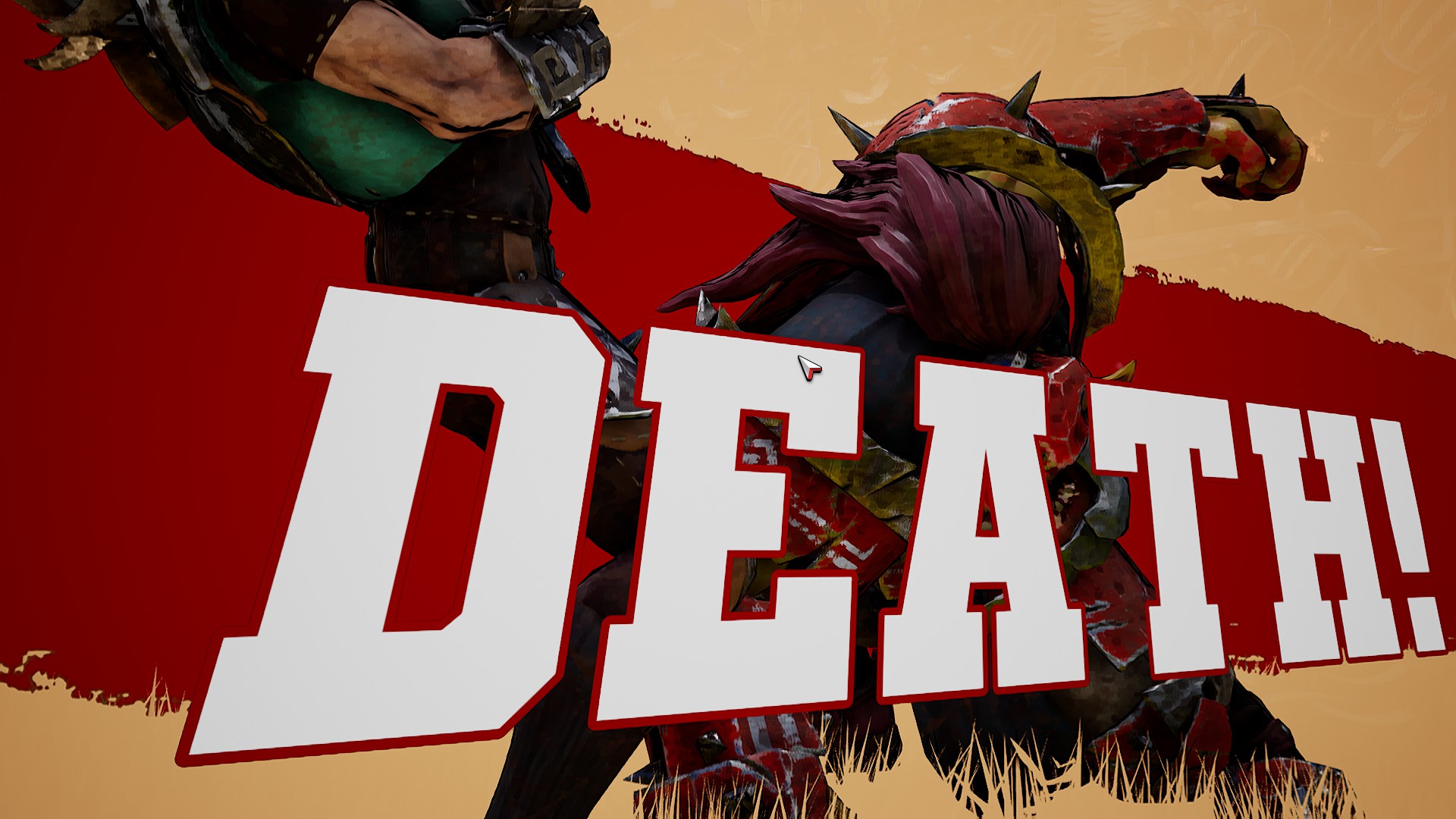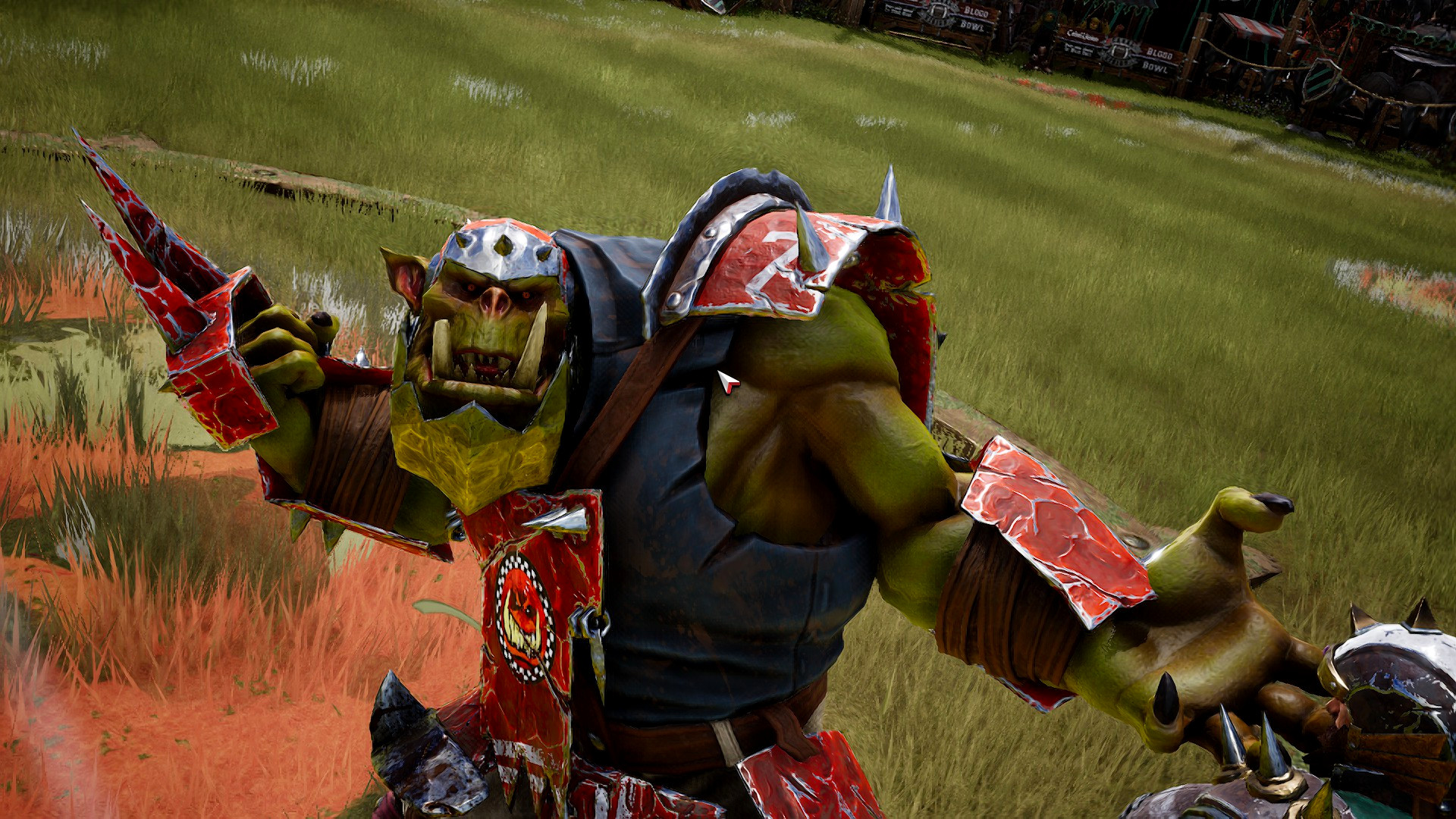Our Verdict
A remarkably fluid adaptation of a tremendously complex tabletop game, Blood Bowl 3 promises a great digital home for Blood Bowl's massive multiplayer community, and the most approachable onboarding experience for new players yet. Single player tactics fans should look elsewhere, however.
Blood Bowl 3 is Cyanide Studio’s latest effort to translate Blood Bowl, Games Workshop’s game of Fantasy Football, into a videogame. It’s a remarkably faithful effort – so faithful, in fact, that Blood Bowl 3 isn’t so much a new game, as it is a way to play one that already exists.
So let’s talk about that board game first.
What is tabletop Blood Bowl?
In a parallel version of the Warhammer The Old World universe, where battling Dwarves and Orcs mistake a NFL playbook for a religious text devoted to the god “Nuffle”, the entire world is swept up in a craze for the raucously violent sport ‘Blood Bowl’. That’s all you need to know about the setting, and there isn’t really a story.
The game has plenty of comedy touches – ‘stunty’ players like Halflings and Goblins have ‘The Right Stuff’ skill, which allows their Treemen or Troll teammates to hurl them down the pitch. But it’s not just a funny board game – it’s a whip smart strategy board game of positioning and risk management.
Players project a tackle zone around them, which threatens enemy players with trips when they attempt to move out of it and makes their other actions, like passing or catching, more difficult. Actions are decided with simple dice rolls, modified by your players’ skills and stats.
Whenever you fail an action your turn immediately ends, passing the momentum back to your opponent for them to start making moves. You have a limited pool of ‘team re-rolls’ for each half of the game, but there’s no way to guarantee your success. Play the odds and roll the bones.
Teams are wildly asymmetrical: some can break faces but struggle to pass the ball, others are nimble but will fall to a stiff breeze. The Halflings can’t punch, can’t survive a kicking, are really slow, and don’t have great aim. There’s nothing to balance that out – they’re objectively bad, and you play them because you want a challenge.
The same team can play in multiple games in a competition, which might itself be part of a league. Players get injured, or killed, or earn Star Player Points for kicking their opponents unconscious or scoring touchdowns, which they spend on new skills and better stats. It’s an expressive game, with scope for plenty of drama as an elven star player’s neck snaps just before the finals.
Blood Bowl III accurately implements the current tabletop Blood Bowl Second Season Edition, and launches with 12 of the game’s 28 teams. Think of it like MTG Arena: the animation, graphics, and audio design add to the experience of playing on a computer, but at its heart, this is a tabletop game with a digital skin.
Blood Bowl III player experience
If you’re new to Blood Bowl, Blood Bowl III’s tutorial campaign will teach you the basics. It doesn’t begin to cover the strategic breadth of the game, but – having started with no expertise at all myself – I’m now confident that I could lose a game of tabletop Blood Bowl without making any procedural errors, just tactical ones.
Winning at Blood Bowl relies on carefully positioning models, plotting a precise path, and declaring your limited actions. Blood Bowl III manages to make this pretty painless. Click a unit followed by a target square and the game will pick a sensible route and declare any context appropriate actions (like blitzing an enemy out of the way or passing the ball) for you, but won’t execute them until you explicitly commit.
Otherwise you can build up your movement with waypoint clicks, and click and hold to summon an action wheel and pick from the contextually possible actions.
Once those actions start unfolding, the game does its best to explain what’s happening. Dice visibly roll beside your player as they dodge or pass the ball. The action will pause whenever something breaks this flow: that could be choosing the die result when you block an enemy, letting you use one of your precious team re-rolls on a failed roll, or asking if a player with a reactive skill wants to use its ability.
It’s still a lot of data, and it isn’t always transparent. A single action might trigger several tests; dodging away from a player with tentacles requires two consecutive dice rolls, or even more if you activated a stupid troll that has to pass a test so it doesn’t spend its turn picking its nose. I’m not just insulting trolls, there; they have a skill called ‘Really Stupid’ which means they’ll spend half a match doing nothing unless a teammate is close enough to kick them in the shins.
Maybe you’d like to use one of your precious supply of team rerolls for this half, and retake the test? What if you’re using that team re-roll on a player with the (strictly negative) ‘Loner’ skill, who must first pass another die roll before they can even use a team re-roll? Die roll slams into die roll and it quickly becomes unclear what anything means.
This is an artefact of sticking closely to the tabletop game – there’s no limit to the combinations of skills players can acquire and how they might interact. Though I’m getting more confident with it, it still leaves me occasionally baffled, particularly when facing off against yet another new skill I’ve never seen before. Fortunately there’s a text log of actions and die rolls you can refer to if you’re ever lost – at some point you will be.
Blood Bowl III graphics
The game looks better than its predecessor Blood Bowl II, but it’s optimised to run on a wide range of machines, not to give your RTX 4080 a workout. Character designs are faithful to the tabletop models made by Games Workshop. They’re characterful little weirdos.
Some players aren’t very visually distinct when in their neutral pose: an Elf Lineman and an Elf Blitzer are both skinny men in leotards when they’re not throwing shapes. The game looks prettier in motion. Blocks and fouls all have bespoke, cinematic animations for every character model.
The motion on the acrobatic Witch Elf or the sluglike Nurgle Rotspawn ooze character (and in the latter case, slime). I saw a few issues of models clipping through one another, but these are basically micro cutscenes, not gameplay, and they’re over quickly.
Provided an action doesn’t end in disaster you can declare what your next player is doing while the last animation is playing. This is utterly essential for the slowest-moving teams and their languorous animations when running up against the default, fairly ruthless match clock.
Blood Bowl III single-player AI
Blood Bowl III has a full single-player campaign which will see your rookie team battle through tournaments against progressively tougher rivals, attracting the attention of appropriately daft sponsors (Orcidas Fitness, Nurgle King burgers, etc.) A lot of affection has gone into the custom voice lines and intro animations framing the games.
I remarked in my Blood Bowl III preview that I trounced the computer every time I took my Skaven team to the pitch. I took that to be a sign of poor AI rather than an unprecedented burst of skill on my part. Further prodding in single games against the AI shows it can hold its own better in some matchups than others.
It performed best when I took the Nurgle Rotters – a slow, durable, clumsy team that can barely even pick up the ball – up against an AI team of nimble Skaven. As the butter-fingered Rotters I was prone to fumbling the ball, which gave the computer many openings it could exploit. It even won! Games were relatively close when I brought the slow and sturdy dwarves or the slow and brutal Orcs, but still heavily in my favour.
I suspect the AI has no idea how to force the player into making hard choices, which means it isn’t much cop against teams whose weaknesses can be easily avoided. This doesn’t really reflect badly on the developers – a group of AI researchers hold an annual competition based around building better Blood Bowl AI specifically because the game is so brutally difficult to code bots for. But it is a problem if you fancy this as a single player experience.
Blood Bowl III multiplayer
There’s also a problem talking about the game’s multiplayer – until launch, there’s no-one to play with. A scant few journalists have early access to the game, but that’s not representative of the server stability or net code on launch day.
In lieu of actually experiencing multiplayer, I can at least talk about the options you’ll have. While Cyanide Studio has made plenty of noise about the upcoming Blood Pass and global multiplayer ladder, and the game will launch with quick matchmaking, the heart of Blood Bowl has always been community organised leagues.
Blood Bowl is, arguably, the world’s most successful competitive miniature wargame. 2023 will see the Nuffle Amorical Football (NAF) fan community host a Blood Bowl World Cup in Spain, Majors in the UK, USA, Canada, Germany, and Australia, and Nationals in France, Italy, Spain, and Sweden. These are ridiculously big events: 1,429 coaches signed up for the 2019 Blood Bowl World Cup in Austria. That’s not 1,429 players at the same convention – that’s 1,429 players in the same tournament.
Project manager Gautier Brésard assured us when we interviewed him that all the features league managers enjoyed in Blood Bowl II are present and correct in Blood Bowl III, and any new features will be configuration options.
There are certainly a wealth of options: up to 128 seats in a competition, options to quicken, lengthen, or remove the match timer entirely, a choice of wissen, round-robin, or elimination tournaments, minimums or maximums on the value of teams that can join, and more.
Do those features work? I don’t know yet. I hope so.
Blood Bowl III final thoughts
Blood Bowl III does a truly admirable job converting an extremely complex tabletop game to a digital client. It has a better on ramp than Blood Bowl II, uses a better version of the tabletop rules, and – if it can coax across the established fans – a rich, player-driven multiplayer community that other games dream of.
My final note is also a rather disappointing one. After a good week without any trouble in the preview build, even running it on a work laptop that’s not much more powerful than a tablet, I experienced a bug that entirely froze the game midway through a match. I can’t imagine the frustration of hitting something like that in minute 50 of a tournament final.
If Cyanide Studio makes good on its promises of continuing post-launch support, a global multiplayer ladder, and of course ensure the game is as smooth and stable as possible, this could be the home of international Blood Bowl for a whole new generation of players. That’s a very important ‘if’.













